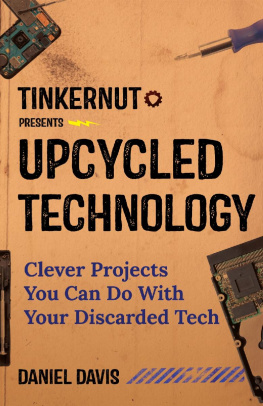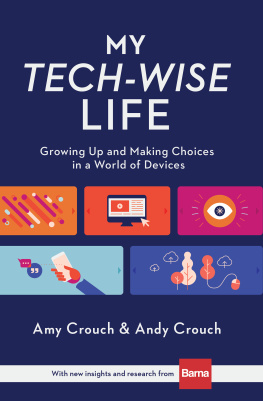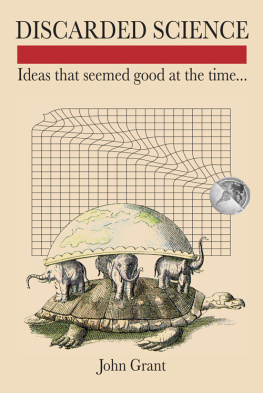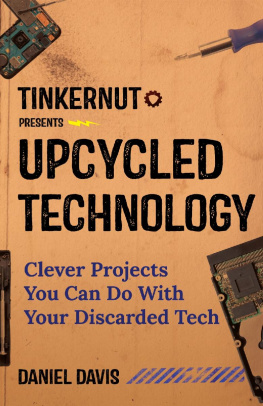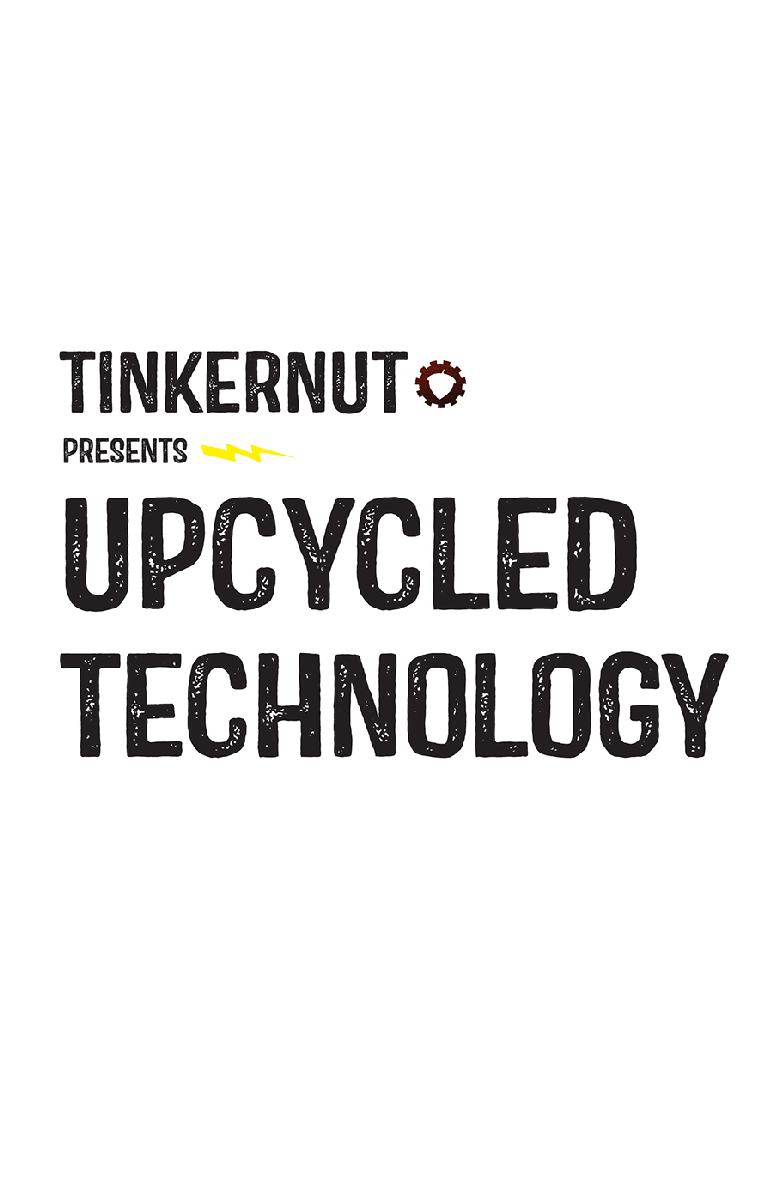
Copyright 2019 Daniel Davis
Published by Mango Publishing Group, a division of Mango Media Inc.
Cover and Layout Design: Elina Diaz
Mango is an active supporter of authors rights to free speech and artistic expression in their books. The purpose of copyright is to encourage authors to produce exceptional works that enrich our culture and our open society.
Uploading or distributing photos, scans or any content from this book without prior permission is theft of the authors intellectual property. Please honor the authors work as you would your own. Thank you in advance for respecting our authors rights.
For permission requests, please contact the publisher at:
Mango Publishing Group
2850 Douglas Road, 2nd Floor
Coral Gables, FL 33134 USA
For special orders, quantity sales, course adoptions and corporate sales, please email the publisher at or +1.800.509.4887.
Tinkernut Presents: Upcycled Technology: Clever Projects You Can Do with
Your Discarded Tech
Library of Congress Cataloging
ISBN: (print) 978-1-63353-909-9 (ebook) 978-1-63353-910-5
Library of Congress Control Number: 2019932088
BISAC category code: SCI028000SCIENCE / Experiments & Projects
Printed in the United States of America
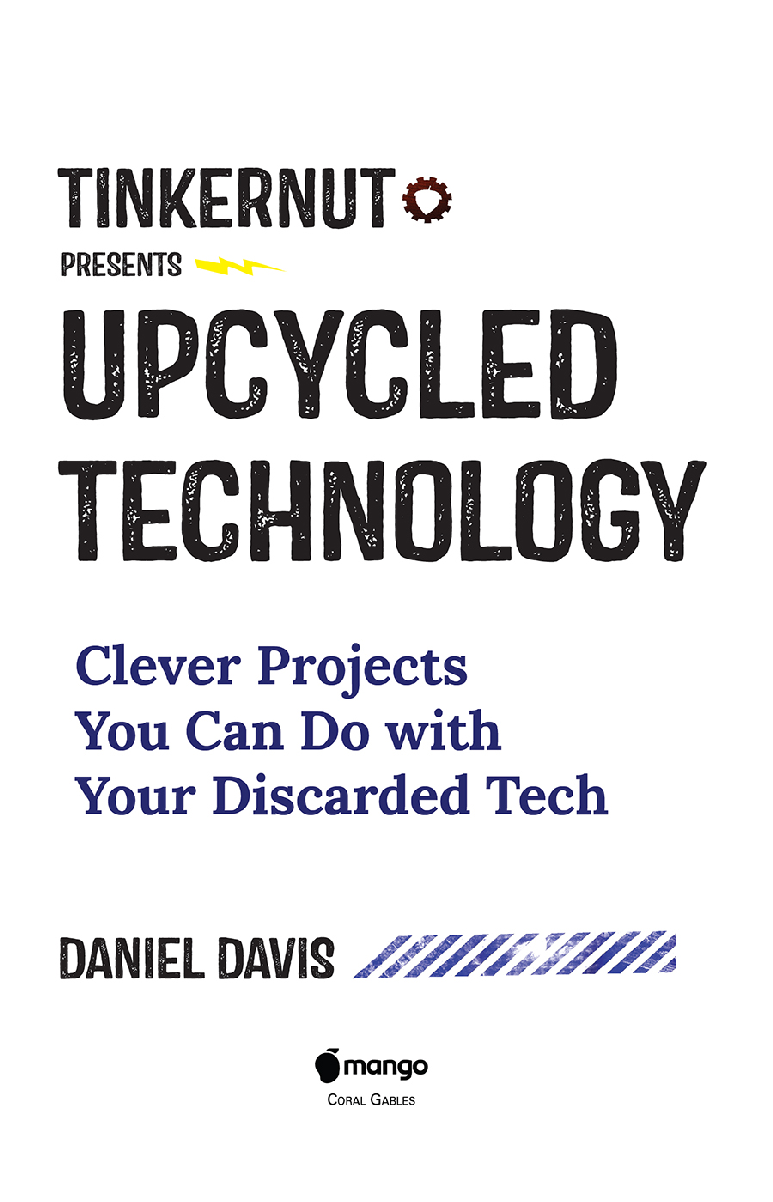
Table of Contents
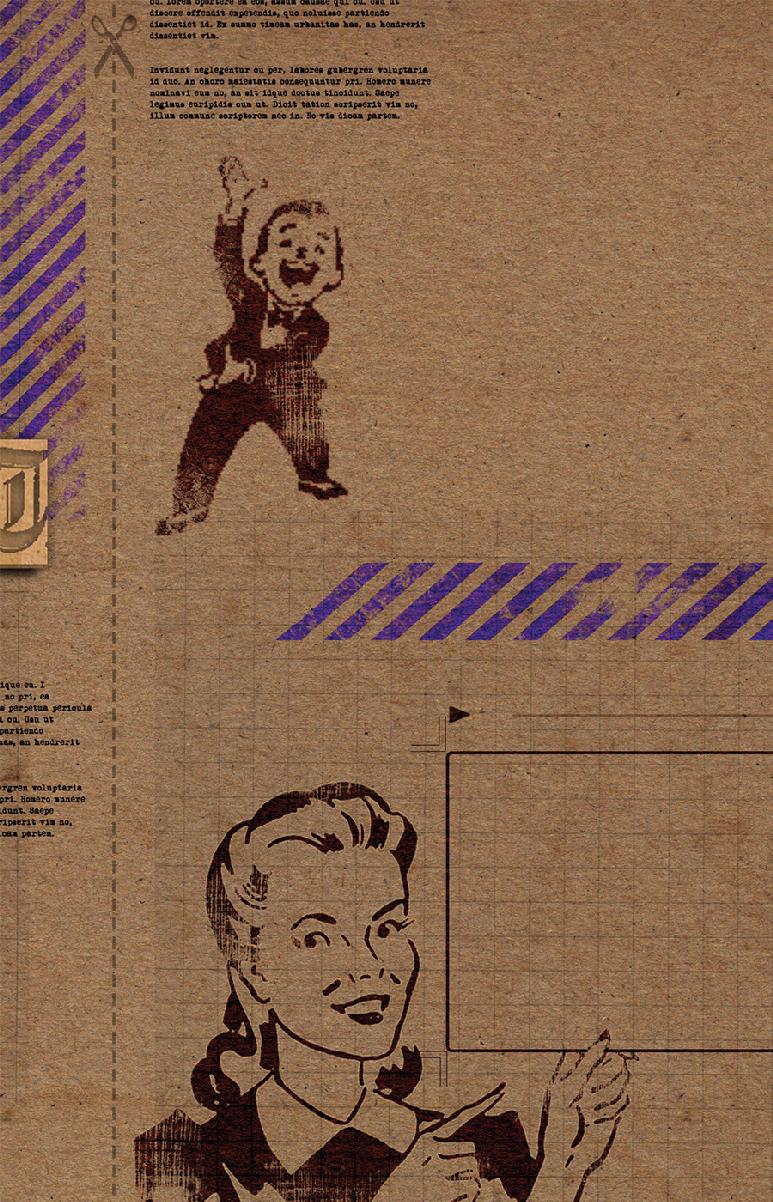

If you are not familiar with the concept of upcycling, I like to define it as the creative act of turning junk into something marvelous. Theres something gratifying about taking whats been discarded and giving it a new soul. While upcycling is most commonly associated with clothing or furniture, we will be focusing on upcycling old technology. So does that mean we will be turning old keyboard keys into new earrings or old CDs into coasters? Not so much. This book will focus more on repurposing and reusing the technical components themselves, such as turning an old flip phone into a smartwatch, or an old laptop into a projector. Why would anyone want to do that? What are the benefits? Lets take a look!
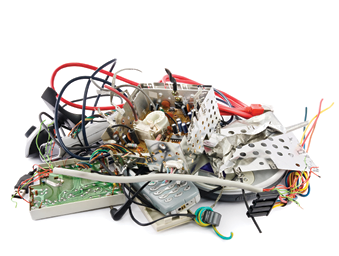
Erasing E-waste
According to the EPA, estimated that fifty million tons of computers, smartphones, and other electronic waste were sent to the dump annually. This can have devastating effects on the environment not only from e-waste, but also through increasing the mining of precious metals that are used to create the newer devices.
Saving Some Money
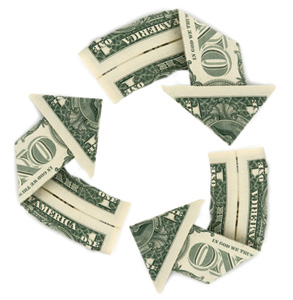
There are always cost saving benefits when you decide to upcycle as opposed buying something brand new. As a tinkerer, however, its hard for me to see all those millions of tons of transistors, resistors, processors, LCDs, LEDs, and other useful bits and bytes that just go to waste. There is so much value and potential just waiting for the right creative spirit to scoop it up and transform it into something incredible! Lesser known pro tip: most electronics use precious metals in their components. Its estimated that each year Americans throw away sixty million dollars in gold and silver. Just think about learning how to extract that!

Kindling That Creative Spark!
I firmly believe that the best way to learn is to embrace creativity and curiosity. A wise man once said, Creativity is intelligence having fun. Upcycling technology is a great way to tap into that creativity while having fun and learning more about the technological world around you. Taking a peak behind the casing helps demystify technology while making it less scary and confusing yet more intriguing and approachable. Seeing the creative potential in old technology can inspire you to create anything; youre limited only by your imagination! Have I piqued your interest yet?
Lets jump right in!

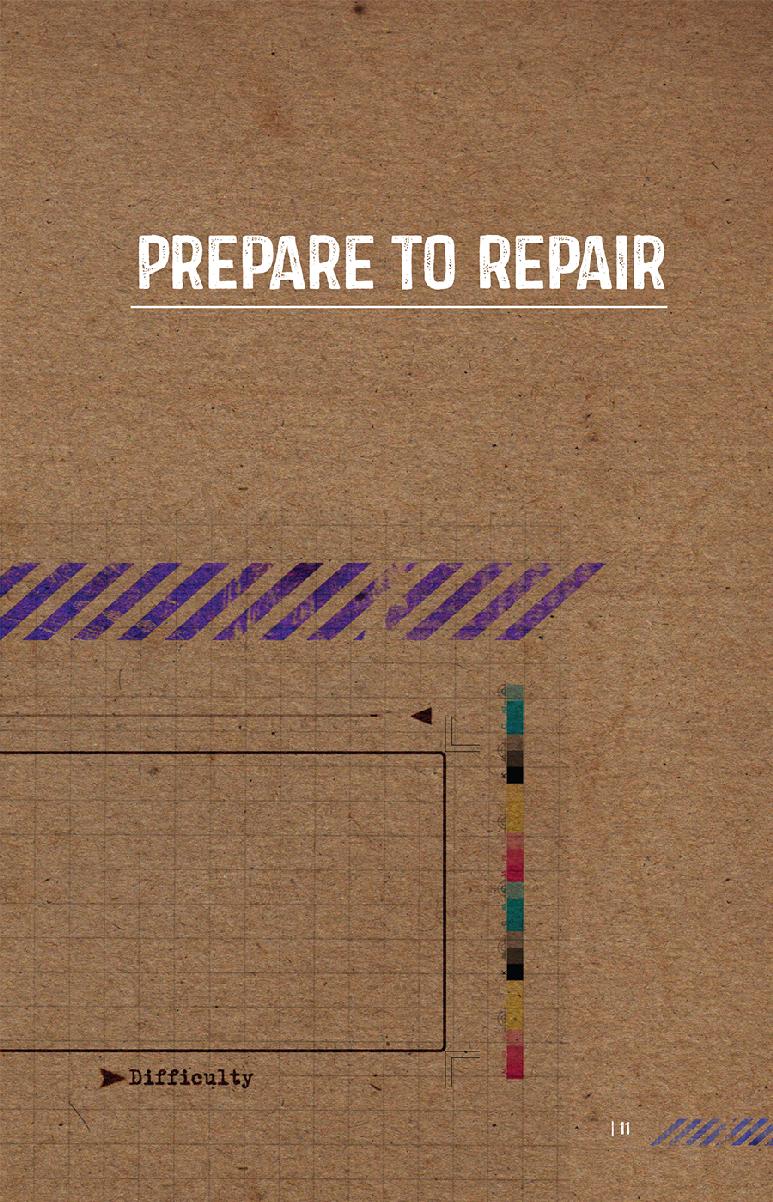
Safety First!
Manuals are for putting things together, not taking things apart, right? Were about to go beyond the instruction booklets to see where the world of technological upcycling can take us! But even seasoned upcyclers need to be cautious when dealing with electronics. Messing around with old devices doesnt come without its risks. Once we alter how something works and plug it into a power source, improperly connected components can be harmful or deadly. So to help alleviate becoming human toast, please be sure to tap into your common (and uncommon) senses when creating your own devices. Along with that, here are a few tips to help you stay safe.
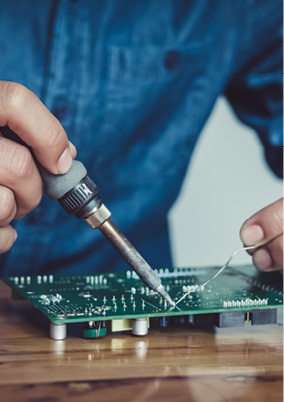
Red Wire or Green Wire?
If youve never cracked open an electronic device before, staring at all those wires, circuits, and components can be a little bit daunting. To help demystify the unfamiliar land of electronics, it would be beneficial to know at least some of the components youre looking at so that you can navigate this new territory easily. Not only is this knowledge recommended for safety reasons (since for example, some components can store electrical charges), but it also aids in scavenging for useful parts and components.
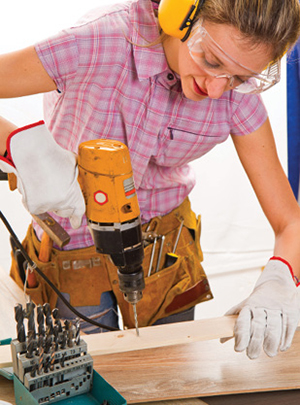
Wheres That Fire Extinguisher?
Aside from what you have decided to work on, where you decide to work on it is just as important. Make sure that your workspace has plenty of ventilation and is safe and dry. Try not to have too much clutter or debris that can get in the way. First-aid kits and fire extinguishers are always a good thing to have. Also, wearing proper safety equipment such as goggles, antistatic gloves, face masks, and so on is a good idea. Hey, if were channeling our inner mad scientists, we might as well look the part, right?
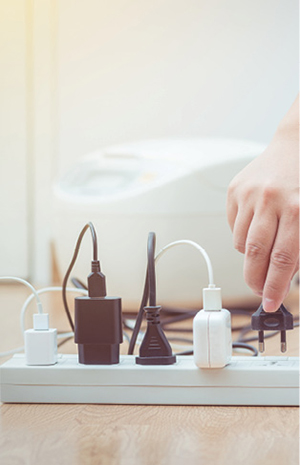
Electricity Is DANGEROUS
Although you probably already know this, its important to point out that electricity can be very harmful or deadly. Always disconnect power before working on a device. Capacitors can store electricity long after a unit has been powered off, so its important to learn how to properly discharge them before handling them. Use surge protectors and never plug anything directly into a wall outlet. And if you smell something burning, disconnect power immediately .
Next page
